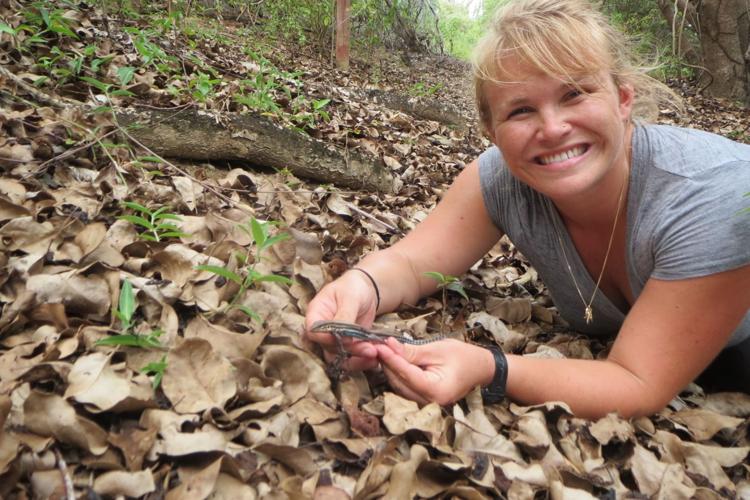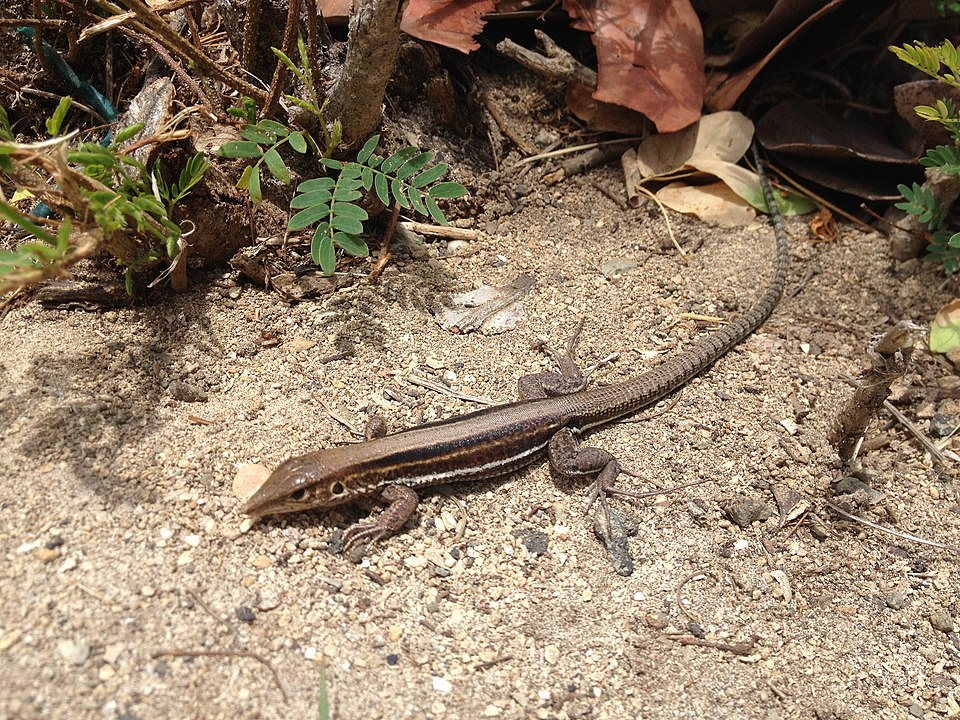CHRISTIANSTED —DPNR has reintroduced the St. Croix Ground Lizard (Ameiva polops) to the main island of St. Croix for the first time in 50 years.
DPNR Commissioner Jean-Pierre L. Orio said his department hopes the experiment will allow the lizard to thrive here as it once did prior to 1969.l
The St. Croix Ground Lizard is only 3.5 inches in length as a fully grown adult and is one of the world’s most endangered reptiles. In an effort to help recover the species from being endangered, the Division of Fish and Wildlife has reintroduced two experimental populations to St. Croix.

This project was organized by the Division of Fish and Wildlife with support from a wide range of collaborators including the University of the Virgin Islands, US Fish and Wildlife Service, US National Park Service, DPNR Coastal Zone Management Division, St. Croix Environmental Association, California Academy of Sciences, and Texas A&M University.
The indigenous lizard was last seen on the main island in 1969 at Fort Frederik in Frederiksted town. It was only left on the offshore cays of St. Croix. “This project introducing small populations to enclosures for monitoring over the next year at the University of the Virgin Islands wetlands and the Sandy Point National Wildlife Refuge is the first small step towards recovering an indigenous species of the Virgin Islands,” Commissioner Oriol said.
The endangered species of St. Croix Ground Lizard (Ameiva polops) should not be confused with the introduced species of the Puerto Rican Ground Lizard (Ameiva exsul) on St. Croix, which is found across the Puerto Rican Bank but was inadvertently introduced to St. Croix in the mid-1990s. The introduced Puerto Rican Ground Lizard was first reported in Estate LaGrande Princess and has slowly expanded over the last 25+ years. The Puerto Rican Ground Lizard is much larger than the St. Croix Ground Lizard and eats native lizards and insects.
“Self-sustaining populations of the species inhabit small offshore islands that comprise less than one percent of its historic range. The collection and repatriation of individuals of St. Croix ground lizards, A. polops, from offshore cays, such as Buck Island Reef National Monument, to the main island of St. Croix is being proposed as a measure to mitigate the potential for catastrophic loss of remaining remnant populations from fire, flood, hurricane, tsunami, and non-native predation.”
This is not the first time an effort has been made to expand the lizards’ habitat. In 1989 and 2008, the lizards were introduced to two mongoose-free offshore islands “in an effort to replicate the last two native populations of the St. Croix ground lizard,” according to the study.
Even with non-native predators on St. Croix, scientists believe that reintroducing the lizards to the island might be successful as the end of sugar cane production in the 1950s has resulted in a change in the islands landscape and the reemergence of suitable habitat.
“Years of management of the St. Croix ground lizard accomplished much of the action needed to allow its populations to persist in the short term, but its survival into the future is not clear. Suitable reintroduction sites within established protected areas have been identified on St. Croix that contain the necessary habitat requirements, along with reduced numbers of non-native predators,” according to the report.”
For more information, please contact the Division of Fish and Wildlife on St. Croix at 340-773-1082.



